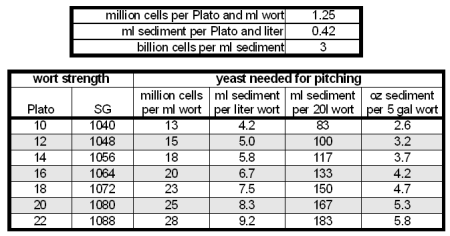No. I am advocating practical and cost effective brewing practices. You can purchase 8 vials of yeast at $6-$8 each or make a batch of beer before you make a batch of beer--when making massive starters--but it is not necessary.
You probably buy high test gasoline too... But your car engine will run perfectly fine on the cheap stuff.
I have worked in this industry in the past--including a homebrew shop when I was younger... Anytime I wanted to get an extra $20 or $100 dollars out of customer--I would say, "it will make better beer." It was a total canard and just plainly a sales pitch. I knew perfectly well, some of the best beer ever made, is done so as cheaply as possible.
What I am advocating is nothing more than what most homebrewers do anyway. From years of experience selling products. And guess what--> it works. And it saves time and money.
Factors (such as pitch rates) that are important to commercial operations--simply are not all that important to small homebrew batches. Especially, when you are just tossing the yeast afterwards--which, by far, most homebrewers do.
You can easily get away with pitching smaller active amounts of yeast than "mr malty," apparently the god of homebrew pitch rates, recommends.
This is not poor brewing process, nor does pitching at "mr. malties" rates create better beer.
My advise is practical and cost effective. Don't like it--don't take it.... But for those new to the hobby--> don't listen to the blowhards telling you to spend a fortune on yeast--> in the name of "better beer." Like I said before, that is simply a marketing ploy to get customers to rationalize separating themselves from their money.
More likely with new brewers--> you will infect your beer by not being sanitary stepping up starters 20 times. I have seen it many times working at a homebrew shop.
By the way, what is "better beer" anyway? That justification is thrown around on this forum pretty liberally. Again, usually when someone spends a lot of needless effort or money into a batch of beer. "Better beer" is a completely subjective phrase and has nothing to with "science."
Not saying don't spend all the time and money you want in this hobby-->that makes it fun.... And padded my pockets when I was younger.
But don't make outrageous claims that your beer is "better" because you pitched more yeast than someone else.










































![Craft A Brew - Safale BE-256 Yeast - Fermentis - Belgian Ale Dry Yeast - For Belgian & Strong Ales - Ingredients for Home Brewing - Beer Making Supplies - [3 Pack]](https://m.media-amazon.com/images/I/51bcKEwQmWL._SL500_.jpg)















